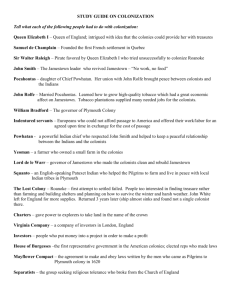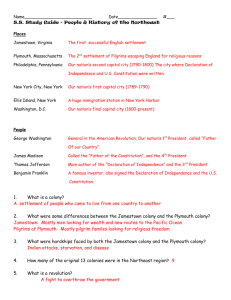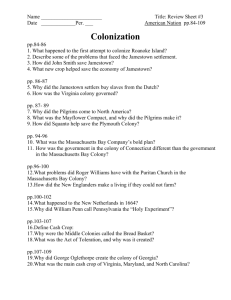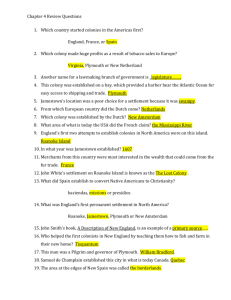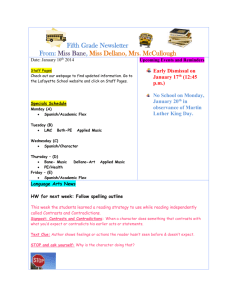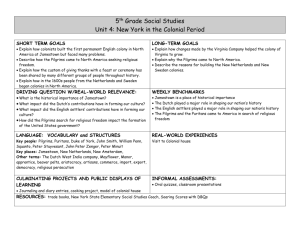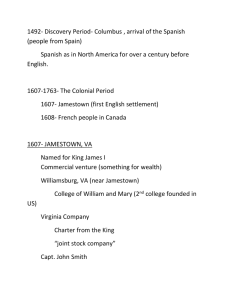Summary – Grade Five - ODE IMS
advertisement
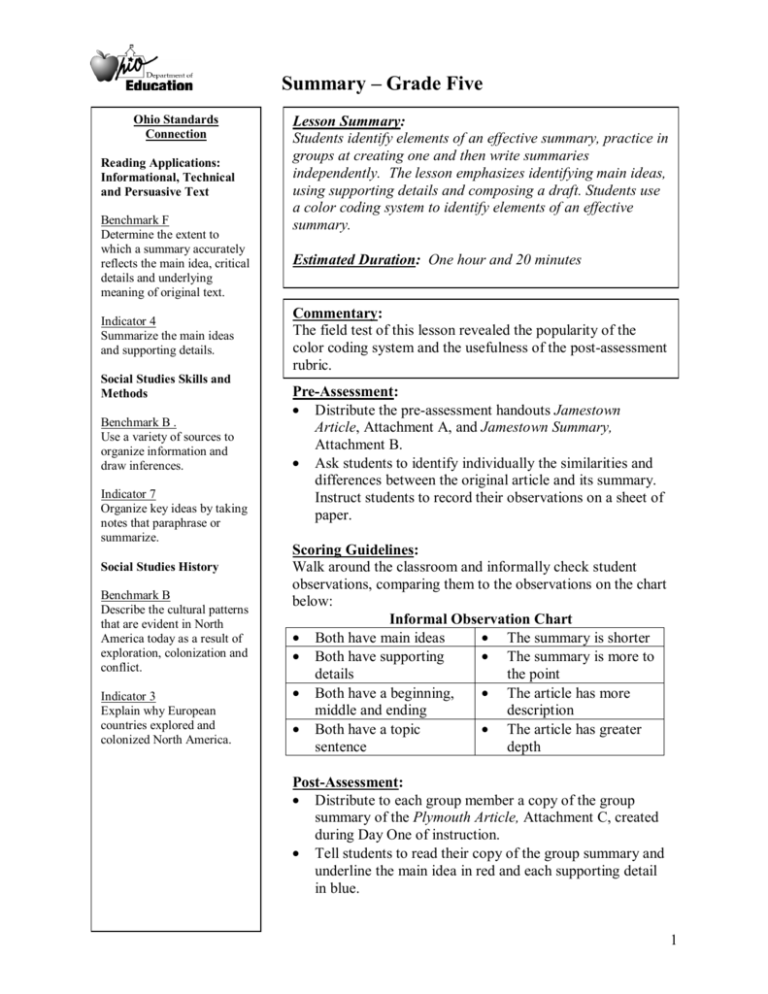
Summary – Grade Five Ohio Standards Connection Reading Applications: Informational, Technical and Persuasive Text Benchmark F Determine the extent to which a summary accurately reflects the main idea, critical details and underlying meaning of original text. Indicator 4 Summarize the main ideas and supporting details. Social Studies Skills and Methods Benchmark B . Use a variety of sources to organize information and draw inferences. Indicator 7 Organize key ideas by taking notes that paraphrase or summarize. Social Studies History Benchmark B Describe the cultural patterns that are evident in North America today as a result of exploration, colonization and conflict. Indicator 3 Explain why European countries explored and colonized North America. Lesson Summary: Students identify elements of an effective summary, practice in groups at creating one and then write summaries independently. The lesson emphasizes identifying main ideas, using supporting details and composing a draft. Students use a color coding system to identify elements of an effective summary. Estimated Duration: One hour and 20 minutes Commentary: The field test of this lesson revealed the popularity of the color coding system and the usefulness of the post-assessment rubric. Pre-Assessment: • Distribute the pre-assessment handouts Jamestown Article, Attachment A, and Jamestown Summary, Attachment B. • Ask students to identify individually the similarities and differences between the original article and its summary. Instruct students to record their observations on a sheet of paper. Scoring Guidelines: Walk around the classroom and informally check student observations, comparing them to the observations on the chart below: Informal Observation Chart • Both have main ideas • The summary is shorter • Both have supporting • The summary is more to details the point • Both have a beginning, • The article has more middle and ending description • Both have a topic • The article has greater sentence depth Post-Assessment: • Distribute to each group member a copy of the group summary of the Plymouth Article, Attachment C, created during Day One of instruction. • Tell students to read their copy of the group summary and underline the main idea in red and each supporting detail in blue. 1 Summary – Grade Five • Ask students to write a summary titled “Why the English Colonized Jamestown and Plymouth” using the Jamestown Summary, Attachment B, and the group summary created Day One. Instructional Tip: Students can peer edit their final summaries by trading papers with a partner and underlining the main idea in red and each supporting detail in blue. Scoring Guidelines: Use the following rubric to assess student work: Topic Sentence Main Idea Supporting Details Post-Assessment Rubric 3 points 2 points Includes an exceptionally Includes a topic sentence clear and precise topic related to the assignment sentence that reflects all the elements of the assignment Clearly summarizes the Clearly summarizes at least main idea for settling one main idea for settling Jamestown and for settling Jamestown or Plymouth Plymouth Includes two supporting Includes at least one details for Jamestown and supporting detail for each two supporting details for colony or two details for Plymouth one of the colonies 1 point Topic sentence needs to be more directly related to the topic Main idea needs further refinement and greater clarity Includes less than one detail for each colony Instructional Procedures: Day One 1. Ask a student to tell the class what happened in a television show he or she may have watched the previous night. 2. Explain how the student’s summary includes the main idea along with a beginning, middle and end, or explain which elements are missing. 3. Ask students to suggest ideas for using summaries in their schoolwork. Student answers might include reviewing for a test, remembering parts of a novel and giving a short answer response in writing. 4. Distribute the pre-assessment handout and allow students to read the article and its summary. 5. Ask students individually to compare the similarities and differences between the original article and its summary. Instruct students to record their observations on a sheet of paper 6. Walk around the classroom and informally check several students’ observations, comparing them to the Informal Observation Chart. 7. Ask students to suggest qualities of a good summary and list suggestions on the board or overhead projector. 8. Divide students into groups of three to four and distribute a copy of the Plymouth Article, Attachment C. 9. Distribute red and blue colored pencils or markers and ask each group to select a scribe and a reporter. 10. Ask students to read the article and agree on the main idea and supporting details. The scribe underlines the main idea in red and supporting details in blue. 2 Summary – Grade Five 11. Tell students to compose a group summary with the scribe recording the group’s ideas. When all groups complete their summaries, reporters share the group summaries with the class. 12. Lead a brief discussion of the similarities and differences among the group summaries. Emphasize that each summary may state the information in a different way but all should include the essential information. 13. Collect the group summaries and make one copy for each member of each group to use in the post-assessment. Day Two 14. Direct students to reconvene with their learning group from Day One and to review the qualities of a good summary. 15. Distribute a copy of the group summary to each group member as described in the postassessment. 16. Tell students to read their copy of the group summary and to underline the main idea in red and supporting details in blue. 17. Ask students to write a summary titled “Why the English Colonized Jamestown and Plymouth” using the Jamestown Summary, Attachment B, and the group summary created Day One. The summary should explain the reasons and goals the English had for colonizing these areas of North America. Instructional Tip: For peer editing, students can trade “Why the English Colonized…” summary papers with a partner and underline the main idea in red and supporting details in blue. To self-edit, require students to compare the main idea and supporting details they underlined in their summary to the underlining in the Jamestown Summary, Attachment B, and the group summary created Day One. Differentiated Instructional Support: Instruction is differentiated according to learner needs, to help all learners either meet the intent of the specified indicator(s) or, if the indicator is already met, to advance beyond the specified indicator(s). • Students can use a concept web to outline main ideas and supporting details. • Vary text selections according to learner needs. • Allow students to work in pairs or small groups to process the material before leading the class discussion. Extensions: • Ask students to summarize content area material for other courses. • Ask students to review and critique chapter summaries from textbooks. Home Connections: • Summarize favorite television shows or movies without naming main characters and try to determine the title based on the summary. 3 Summary – Grade Five Materials and Resources: The inclusion of a specific resource in any lesson formulated by the Ohio Department of Education should not be interpreted as an endorsement of that particular resource, or any of its contents, by the Ohio Department of Education. The Ohio Department of Education does not endorse any particular resource. The Web addresses listed are for a given site’s main page, therefore, it may be necessary to search within that site to find the specific information required for a given lesson. Please note that information published on the Internet changes over time, therefore the links provided may no longer contain the specific information related to a given lesson. Teachers are advised to preview all sites before using them with students. For the teacher: copies of all handouts and an overhead projector, chalkboard or whiteboard For the students: red- and blue-colored pencils or markers Technology Connections: • Use an LCD projector and a computer, displaying for the class each typed student suggestion for writing the summary. This procedure allows the class to see the writing in progress and to edit as a group. • Use outlining or organization software to create webs or outlines of main ideas and essential details. Research Connections: Cawelti, Gordon. Handbook of Research on Improving Student Achievement. Arlington, Va.: Educational Research Service, 1999. Dr. Cawelti’s research on student achievement has found language arts instruction that a) fosters interactive learning, b) uses meaning-making skills and strategies such as summarizing, c) teach critical reading and writing skills and d) emphasize discussion and analysis improves student performance. Attachments: Attachment A, Jamestown Article Attachment B, Jamestown Summary Attachment C, Plymouth Article 4 Summary – Grade Five Attachment A Jamestown Article After hearing of the success of the Spanish, the English were eager to seek their share of riches in the New World. Since the English government could not support such a venture, private merchants formed a plan to establish a colony on the new continent in hopes of striking it rich. According to the plan, a group of London merchants formed two joint-support stock companies called the Virginia Company of Plymouth and the Virginia Company of London. The companies sold shares to many individual investors to raise money to establish a colony. If the colony was successful, all the investors would share in the rewards. The first settlers arrived at Chesapeake Bay in 1617 and sailed up a wide river. They named the river the James River after their king in England. The location they selected for their colony had many advantages and disadvantages. The main advantage was that the settlers should keep watch for any Spanish ships patrolling the coast. They were also well situated for trade with the native peoples. Unfortunately, the land was swampy and filled with mosquitoes. It also lacked good drinking water. Another major disadvantage was that the settlers had joined the company for profit and adventure but new little about surviving in the wilderness. 5 Summary – Grade Five Attachment B Jamestown Summary Like Spain, England wanted to seek riches in the New World. English merchants established the Virginia Company of Plymouth and the Virginia Company of London to establish a colony in America. If the colony was successful, all investors would profit. When the settlers reached their destination, they built a colony along a river near what is now called Chesapeake Bay. The location was good for spotting Spanish ships and trading with native peoples. The land was swampy, however, and the settlers lacked good water and experience living in the wilderness. 6 Summary – Grade Five Attachment C Plymouth Article Not all of the early English settlers set their hopes on profit in the New World. A small group who called themselves Pilgrims began the colony of Plymouth so they could follow their religious beliefs without persecution. In England, the Pilgrims strongly disapproved of the Church of England and were often attacked for their beliefs. They moved to the Netherlands where they could worship freely. However, they found it hard to earn a living and their children were influenced by the Dutch. In 1620, the Pilgrims decided to move to America to establish a colony based on religious freedom. After sailing aboard The Mayflower for several months, the Pilgrims landed at Cape Cod. Since they arrived in the winter, the first season was especially hard on the Pilgrims and almost half of them died. Later, they got help from the Native Americans in the area that taught them how to hunt the forest, where to fish and how to grow corn. The Pilgrims celebrated the help of the Native Americans the following harvest, which became known as the first Thanksgiving. While they remained a poor community, the Pilgrims were content in their belief that God put them in America to live in a truly Christian community. 7
